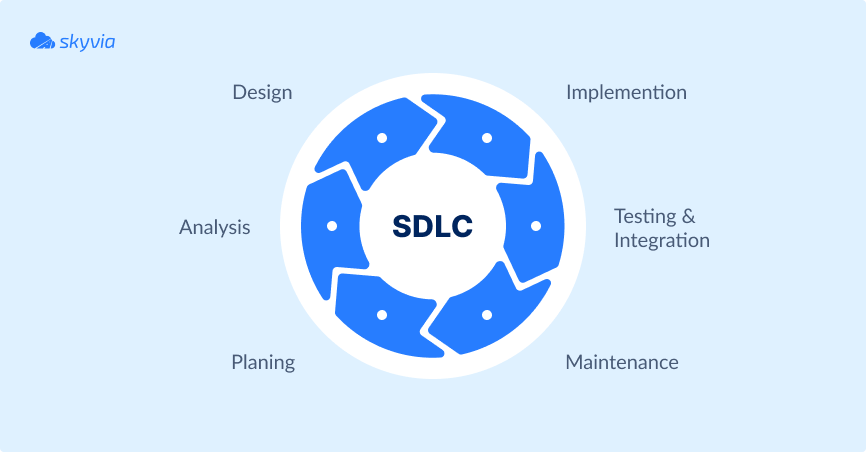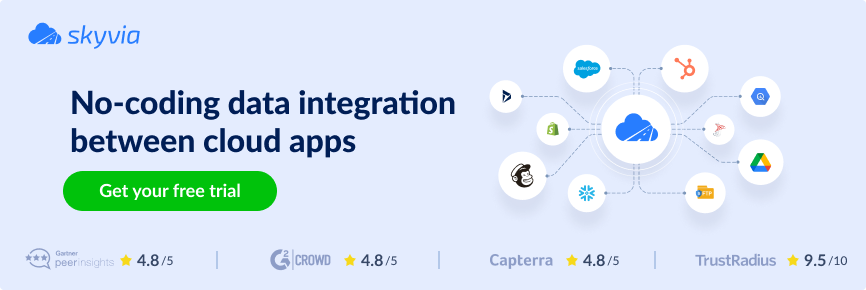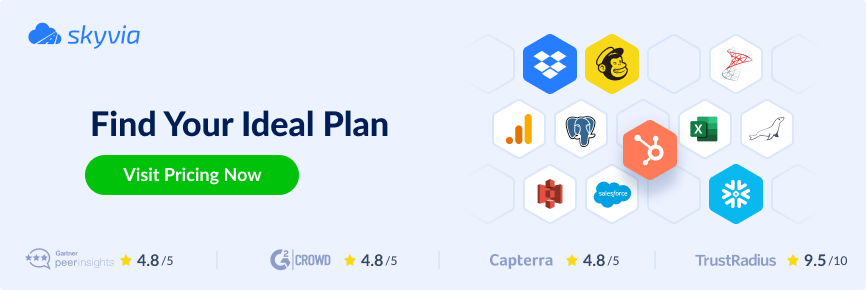Business analysts are currently in high demand across the financial, IT, and healthcare industries. If you want to start your career as a BA or transfer to another company, you’ll need to carefully explore these sectors, research the companies of interest, and keep in line with the current BA trends.
It’s also crucial to be well-prepared for an interview regarding technical skills, business analysis, problem-solving, project management, etc. Here, you can find the most popular questions asked during business analyst interviews with sample answers.
Table of Contents
- Understanding the Role of a Business Analyst
- Preparation Tips for Business Analyst Interviews
- Popular Questions on Business Analyst Interview
- Final Thoughts
Understanding the Role of a Business Analyst
“A Business Analyst is a person who creates, interprets, and documents business processes, products, services, and software requirements.”
Business analysis is becoming increasingly important across multiple organizations operating in different sectors of the economy. According to the International Institute of Business Analysis (IIBA), almost half of all business analysts work in the financial services and IT industries. BAs are also heavily employed in governmental and healthcare organizations.
Key Responsibilities of BA
The range of tasks for a BA depends on the industry and a particular company. However, there are some typical responsibilities a BA is regularly involved in.
- Gathering requirements. This implies collaboration with stakeholders (clients, employees, business partners, etc.) to collect different requirements for new products or features and improve existing ones.
- Communication with stakeholders. In addition to gathering requirements, a BA must present project updates to stakeholders and discuss any issues with them when appropriate.
- Solution development. Creating initiatives and solutions that meet business needs and objectives.
- Process documentation. Registering input data and output results of the business analysis (business and functionality requirements, business proposals, business cases, process mapping).
- Implementation support. Collaborating with the IT department to implement solutions and ensure they meet the functionality requirements.
- Quality assurance. Assisting QA teams in designing and executing scenarios for testing functionality.
Typical Skills of BA
The BA role is an umbrella term encompassing multiple career paths, from system analyst to Salesforce business analyst. Each of those demands a slightly different skill set, but many skills are required for every business analyst.
- Domain knowledge skills. This includes an analytical mindset with a structured approach to problem-solving and techniques for business analysis (SWOT, PESTLE, brainstorming, etc.).
- Technical skills:
- BI tools, such as Power BI or Tableau;
- Strong knowledge of databases and SQL;
- PM and issue-tracking software like Jira;
- Documentation platforms like Confluence;
- Tools for creating mockups and diagrams;
- CRM and ERP systems;
- Programming languages R and Python for quicker data analysis.
- Soft skills:
- Understanding of business and industry it operates in;
- Communication and interpersonal skills;
- Critical and analytical thinking;
- Collaboration and teamwork;
- Negotiation skills;
- Problem-solving capabilities;
- Time management.
Preparation Tips for Business Analyst Interviews
A book is judged by its cover, so it’s necessary to make a good impression on an interviewer. Whether you are a business analyst beginner or an experienced professional, it’s a good idea to get ready for a job interview.
One of the best pieces of advice is to be yourself. It would also be a plus to learn more about the company you are applying to.
Here are some other recommendations that might help you during the preparation for an interview:
- Review the job description attentively. Take a look at the tasks associated with the BA role in a particular company, and think of how you can cope with them.
- Research the company. Learn more about the organization where you can potentially work. Conduct research on its products and services, and see which improvement you can offer. Moreover, the review of current and previous employees will give a better idea of what it looks like working in the selected organization.
- Practice common questions. Take a look at the most popular questions asked during the interviews for a BA role.
Popular Questions on Business Analyst Interview
Typically, the questions for a business analyst interview can be classified into several categories: domain knowledge, technical skills, and soft skills. Below, find some of the typical questions for each category accompanied by sample answers to them.
Domain Knowledge
Question 1: How do you stay updated with industry trends?
Here, you can mention certain YouTube channels, such as DataCamp or Google Cloud Tech, that provide updates and new trends in business analysis. Business Analysis Digest and the IIBA blog are also good resources helping to follow trends. You can also mention data evangelists who frequently update BA approaches and talk about data integration trends and other related fields. Here, you can also mention resources related to the particular industry that a company operates in.
Question 2: Can you give an example of how you used market trends to benefit a project?
Following market trends can help to understand your competitors’ actions and clients’ reactions to them. You can also discover which features of competitors’ products attract clients and help to retain the existing ones. For instance, if you’ve noticed that a competitor’s company has implemented new software functionality and their sales boosted incredibly, adding similar functionality to your product is a good idea.
Question 3: How do you gather requirements from stakeholders?
The first and most important step is to identify your stakeholders. These could be clients, end users, investors, managers, etc. Then, depending on the stakeholders involved and the project’s complexity, you may need to conduct interviews, organize brainstorming sessions, or apply other methods for requirements gathering.
Question 4: Please define the terms Use Case, User Story, and Acceptance Criteria. Explain the differences between them.
- Use Case is a diagram containing a set of instructions that explain how users interact with a system.
- User Story is a concise description of the desired functionality from the user’s perspective.
- Acceptance Criteria contain a set of rules and definitions that must be fulfilled when implementing new functionality based on a user story.
Question 5: How do you handle requirements changes?
It might often happen that the requirements for new or existing functionality keep changing. This has a huge impact on the implementation of these features. So, you need to inform stakeholders requesting a change about its impact on the final deadline and set new timelines.
Question 6: What are the steps of the business analysis process flow?
- Explore the background information about the company, together with its processes and the industry in which it operates.
- Identify key stakeholders for the project.
- Discover the business objectives of the company.
- Define the scope of the work to be done.
- Gather and outline the requirements for the project.
- Assist the development team on the implementation of the project.
- Assess the new functionality with the quality assurance team.
Question 7: What is the business process modeling?
Business process modeling involves creating diagrams to illustrate business processes, including subprocesses. Such a graphical representation provides a better idea of each business process, including the events, initiators, decisions, outcomes, devices, and timelines associated with it.
Question 8: What documents does a BA usually prepare?
Here are some typical BA documents:
- Business Requirements Document (BRD) describes the specifications and requirements for a product or process along with the expected result from it.
- Functional Requirements Specifications (FRS) document describes the functional requirements and the intended behavior of the system. This includes tasks, transactions, access control actions, and other procedures.
- Requirement Traceability Matrix (RTM) is a document for mapping and tracking project requirements.
- Use Case Diagrams illustrate users’ behavior and interactions with the system. They are very helpful to the development team during the implementation process.
Question 9: What is an SDD document?
Sometimes, a BA creates a software design document (SDD) depicting software product architecture. This document is required when software is made from scratch and becomes the guidebook for developers during project implementation.
Question 10: What is gap analysis?
Gap analysis is a technique for assessing the product’s current state and comparing it to the desired state. The differences between the current and future states are known as gaps. They can be used as points for improvement for the existing product.
Question 11: What is the software development life cycle (SDLC)?
SDLC is the end-to-end process for software development made up of the following stages:
- Planning
- Analysis
- Design
- Development
- Testing
- Deployment
- Maintenance

SDLC enhances project management and its deliverables, helps to mitigate risks, contributes to better collaboration between stakeholders, and brings other tangible benefits.
Question 12: Can you name the business analysis techniques?
- SWOT analysis is applied to define business strengths, weaknesses, opportunities, and threats in the chosen market.
- PESTLE stands for Political, Economic, Sociological, Technological, Legal, and Ecological factors that can impact the business in the chosen market.
- CATWOE aims to collect different stakeholders’ perspectives in a unified view.
- Brainstorming is a technique used to generate new ideas and solutions for complex problems in a group of stakeholders or employees.
Questions on Technical Skills
Question 13: What software applications are essential for a Business Analyst?
Every BA, from junior to senior, needs to have excellent knowledge of the essential BA toolkit. Here are some of the most popular services a BA uses daily:
- Project management tools like Jira
- Data preparation tools like Excel
- Data visualization and analysis tools like Power BI
- Documentation management tools like Confluence
- Data integration tools like Skyvia
Question 14: What business analysis tools are you proficient in?
Here, mention the software tools you are familiar with and describe the ones used in your daily BA workflow.
Question 15: What is your approach to writing clear and concise documentation?
Each BA has its own writing style and approach to documentation creation. However, there are several rules of thumb that make documentation look organized:
- Keep all the documents in the same place and ensure the corresponding access permissions to the involved parties.
- Each document needs to be well-structured by implementing headings and subheadings.
- If there are jargon terms, include a vocabulary at the beginning of the document to help stakeholders understand what you’re talking about.
- Make sentences clear and concise.
Question 16: What is your experience with SQL?
SQL is a popular query language used by various professionals in the IT industry. Business analysts don’t need to be super proficient in SQL, but having a strong understanding and practice of the following statements would be a plus:
SELECT column1, column2, ... | It’s a classic example of data retrieval based on a certain condition. |
UPDATE table_name | This is a typical statement for updating values in the table that match the specified criterion. |
DELETE FROM table_name | This statement is used to delete certain rows from a table. |
SELECT column1, column2, … | This statement combines rows from several tables based on a related column between them using a join condition and filters. |
SELECT column1, | This statement groups the rows based on the values of a column. |
SELECT column1, column2, … | This statement sorts the rows based on the values of one or more columns. |
Question 17: How familiar are you with BA tools like JIRA and Trello?
- Jira is a popular tool for tracking issues and managing projects. It’s often used to create user stories describing functionality from the end-user perspective, which are then heavily used by the development and quality assurance teams.
- Trello is very convenient for project tracking, from the analysis stage to deployment. It’s a Kanban-style tool with the possibility to create boards that correspond to the SDLC.
Question 18: How do you approach data analysis?
Data analysis is integrated into business analysis and takes place during requirements gathering or the final stages of product deployment. It involves the necessary data collection and making it analysis-ready.
Skyvia allows users to gather data from various sources, organize it, and load it into BI software, such as Power BI or Tableau. It’s an exceptional data integration and data aggregation tool suitable for a range of data-related tasks.

Skyvia has a number of advantages for business users:
- Collect data from 180+ data sources, including SaaS applications, databases, data warehouses, and flat files.
- Create various data pipelines within a visual wizard with no coding required.
- Access this platform directly from a web browser at any time.
- Choose the plan that best suits your business processes. You can also start with a free trial to explore how Skyvia works.
Question 19: Which data visualization tools do you prefer and why?
There are multiple data visualization tools, such as Looker Studio, Microsoft Power BI, and Tableau.
Looker Studio is perfectly connected with other apps in the Google ecosystem. This tool also allows users to create excellent dashboards and reports with no hassle to illustrate the results of the work done. Therefore, Looker Studio could be a great option for beginners.
Power BI is a dedicated solution for business intelligence tasks with a number of data visualization options. This tool allows users to create dynamic dashboards that can be easily shared with stakeholders, even from a mobile phone. In contrast to Looker Studio, Power BI requires some background knowledge and experience in data analysis.
Tableau is a modern BI tool known for its outstanding data visualization options. It makes it easy to create intuitive and interactive dashboards. You don’t need any specific technical knowledge to work with Tableau, but you’ll need to dedicate some time to exploring this tool’s functionality.
Question 20: What is UML and how to create it?
UML stands for unified modeling language used to create a visual representation of software system architecture. Business analysts use UML to build diagrams that are implemented in the software design document (SDD) and use case diagrams.
Soft Skills
Question 21: Can you describe a time when you had to manage a difficult stakeholder?
One of the fundamental responsibilities of a business analyst is dealing with stakeholders. All people are different, so sometimes, it might be challenging to deal with a business setting. Each case is unique, but you need to communicate the situation clearly and find a solution that would satisfy all the involved parties. As you see, strong communication and negotiation techniques are a must for a BA. It also makes sense to improve interpersonal communication with difficult stakeholders to soften their attitudes.
Question 22: How do you ensure effective collaboration within your team?
The approaches toward effective collaboration depend on whether your team is on-site or scattered worldwide. In the first case, make sure to organize regular team-building activities to get to know your colleagues and establish better interpersonal relationships with each other. Another important aspect is to ensure multicultural education so that your team learns to understand and accept differences. Such approaches will help your team stay motivated and increase trust in each other.
Question 23: How do you handle conflicts within your team?
Even in the friendliest teams, some conflicts may take place. The role of a BA is to listen to all the parties involved, conduct an open discussion, and find satisfactory solutions that can resolve that conflict. Also, a BA must ensure that all parties follow the code of conduct established within an organization. In case some of the values and rules are violated, the responsible ones need to be brought to justice.
In case a BA is involved in the conflict, third parties, like HR or project managers, need to be attracted.
Question 24: How do you engage with stakeholders throughout a project?
Here, you can mention that you update stakeholders about the project’s progress and status at the end of each sprint. If those are clients, organize a video call or an on-site meeting with them. If those are developers, you also have regular team gatherings where you discuss the work done and its correlation with the project deadline.

Question 25: How do you communicate complex information to stakeholders?
Complex information might be jargon, industry-specific terms, or complex ideas. When talking to clients, partners, or non-tech personnel, it’s necessary to avoid such jargon terms or at least explain their meaning in detail. Communicating complex ideas could be facilitated by visuals and examples accompanied by clear and simple language.
Question 26: Can you describe your experience with the project lifecycle?
As a rule, a BA plays a crucial role during the planning and analysis stages within the SDLC and project lifecycle. A business analyst identifies requirements for a product or service and proposes solutions for its implementation. A business analyst also takes an active part during subsequent stages of the project by assisting design, development, and testing teams.
Question 27: How do you identify and mitigate risks in a project?
This activity is usually performed in collaboration with a project manager using a risk analysis technique. It aims to identify and evaluate strategic, performance, financial, and external risks. The risk analysis table includes the risk description, likelihood, and consequences converted into numerical format. Depending on the obtained risk levels, you’ll know which ones to focus attention on for mitigation and prevention.
Question 28: How would you handle a situation where a project is behind schedule?
The first thing to do is to explore the root causes of deadline violation. The second thing is to address those who contributed to this lateness and ask them to speed up the process. Also, you’ll need to explain the situation to other stakeholders involved. Another thing is to estimate new deliverables for the project and make sure they will be adhered to,
Question 29: What are the most common software methodologies?
The most commonly used software methodologies are Agile and Waterfall. Agile assumes the project deliverables arrive in iterations. Waterfall is the multi-stage methodology that corresponds to the SDLC, where each new phase begins only when the previous one is 100% completed.
Question 30: Why is the role of BA important for businesses?
Some companies decide to delegate business analysis tasks to developers or project managers. However, those professionals usually have a different scope of tasks and lack a deep understanding of business processes and the industry. Meanwhile, a business analyst is proficient in market trends and industry specifics and knows how to drive innovation and change in an organization.
Final Thoughts
BAs play a crucial role in various companies across industries. Moreover, there is currently a high demand for business analysts in the market. So, if you want to start your path or advance your career as a business analyst, getting ready for an interview is a must.
By exploring the most popular business analyst interview questions, you mightn’t get 100% ready, though this highly increases your chances for success. Knowing answers to the most popular BA interview questions helps you make a good impression on interviewers.

